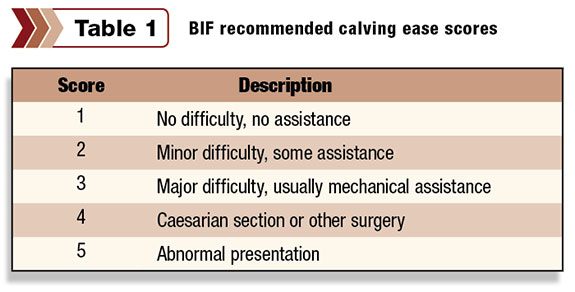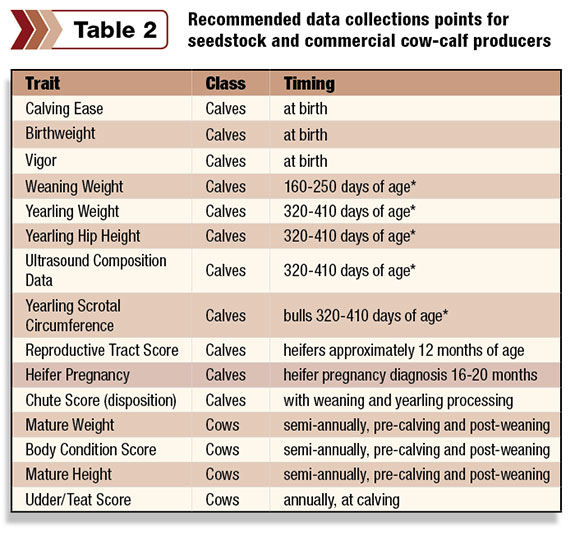With the spring bull-buying season just around the corner, it’s important for producers to review their current data collection scheme and the data they use in selection of bulls to remedy problems in their herd.
Many producers still collect birthweights of calves as part of their performance record collection system.
Producers are encouraged to transition to collection of calving ease scores instead of, or in addition to, birthweights.
Birthweight only accounts for 55 to 60 percent of the genetic variation in calving ease. So selection for reduced birthweight alone won’t improve calving ease as much as selecting directly on calving ease.
And since birthweight is strongly correlated with other growth traits, reduction in birthweight is usually associated with decreased growth performance at weaning and yearling.
For cow-calf producers, calving ease is the economically relevant trait associated with dystocia.
Economically relevant traits (ERTs) are those that directly generate revenue or incur costs in beef production systems.
In the case of a commercial cow-calf producer, dystocia (or lack of “calving ease”) is what generates costs in a cow herd through direct losses of calves and their dams, increased labor costs and certainly lower reproductive rates among cows that have experienced dystocia.
Birthweight is an indicator trait. In this case, birthweight provides some information on calving ease.
Birthweight alone doesn’t directly generate revenue or incur costs independent of calving ease. It’s important to recognize that there is an optimal range of birthweights in beef cattle.
Certainly, too heavy of a calf is a problem during delivery of the calf – hence our selection, at least historically, for lower birthweights.
However, too small of a calf at birth is problematic as well. This is especially true for winter/spring calving herds.

During severe cold stress, low-bodyweight calves are more susceptible to hypothermia and subsequent death or disease issues.
Indeed, very low-birthweight calves in northern latitudes can dramatically reduce survivability for calves born in winter months.
 Recording calving ease scores is easy and should be done at or shortly after birth.
Recording calving ease scores is easy and should be done at or shortly after birth.
The Beef Improvement Federation recommended calving ease scores are listed in (Table 1 above right) and in the front of the NCBA IRM red books.
Monitoring calving ease in heifers and cows will allow producers to select sires with optimal calving ease and moderate levels of birthweight, helping to minimize dystocia.
Calving ease records may also allow identification of sires that are causing problems.
Sire selection for improved calving ease should focus on calving ease EPD – and for sires of replacement females, maternal calving ease EPD should be considered. ![]()








